Flights of Fancy: Ancient Aircraft or Tonight’s Dinner?
There are very few television shows I’ll actually make it a habit to watch, but one of them is Ancient Aliens. I find it rather interesting and entertaining; you can discover a lot of interesting places and history by watching, but there are a lot of connections made by taking galactic-sized leaps between civilization and extra-terrestrial visitation. And then, there are the incorrect assumptions and statements about the abilities (and intelligence, or lack of it) of people living in ancient civilizations. I can count at least several instances per episode. It bothers me every time they start by saying, “It’s impossible for these people to have…”
There are many times during these shows when signs, symbols, and artifacts are said to be ‘proof positive’ that UFOs hovered over India or aliens brought industrial technology to the Egyptians. At best, the connections are very circumstantial. And what’s worse, they often forget to look into the more mundane possibilities. One such case—a very popular piece of evidence appearing in the show—comes from South America in the form of golden pendants.
Hundreds of tiny pieces of gold jewelry were unearthed near the Magdalena River in north central Colombia approximately one hundred years ago. They were zoomorphic, or shaped like animals, and only a few centimeters in size. Approximately a dozen of these pieces have been said to resemble modern airplanes, yet they are believed to be from the Tolima culture crafted between 500 and 800 BCE, long before the Wright Brothers made their famous trip at Kittyhawk. In 1954, it’s said that an American jeweler named Emanuel Stubbs created duplicates of six of these gold objects. To some, these trinkets are known as the “Colombia Jets;” proponents of the ancient astronaut theory say they’re definitive proof of impossible technologies brought to the ancient people by beings from outer space.
Archaeologists and scientists say they’re birds and insects. Another theory regarding the most popular artifact (shown above) is that it could be a Hawk Moth; given their unusual characteristics, this could be true. But there are a few people out there with alternative theories who I think are headed in the right direction. They claim these are stylized fish. But let’s take a look at what one die-hard ancient jet advocate had to say about this:
ADVERTISEMENT
“There are water animals which seem to fly through the water, such as rays, skates and some Selachians. But how does the depicted object compare with these choices? All its features taken into a consideration, we have no match. Seen from above, the object obviously has no fish features, but seems to show rather explicitly mechanistic ones.
In any case, they look more like airplane parts than like the claspers of a fish. If the two prominent spirals on the wings are supposed to be a stylized version of the eyes of a ray, then what are the two globular objects positioned on the head supposed to represent? To complicate the identification even more, the spirals on the wings have their copies positioned on the nose of the object, in the opposite direction. When the object is viewed in profile, the dissimilarity to anything from the animal kingdom is even more pronounced. If the zoomorphic explanation is supposed to hold, then why did the artist cut the head off almost three quarters from the body? And why is the nose is practically rectangular and the cut tilted forward, with eyes positioned at either side, when fish eyes are usually more near the center of bodyline and far forward on the head?
The tail is equally intriguing. No fish has only a single, upright and perpendicular flange. But this tail fin has an exact shape of fins on modern airplanes. There are also some markings on the tail which are hard to identify, but it does not seem to be anything related to animals, either.”
So… there’s no fish out there with features resembling these objects? Emphasis is on the design itself, not the overall layout of the body itself. But wait! What’s this?
Oh. That’s an armored catfish. And what’s that? It’s found on the north coast of South America? In fact, a catfish could easily explain a lot of the features: the upright tail fin, the two bulging eyes on top, the flat underbelly, the “wings” or fins in two pairs along the side.
But hah, the gold artifacts don’t have a dorsal fin, you say? Well, when you commonly see an Plecostomus (“algae eater”) or Loricariidae (catfish) resting on the bottom of a river, its top fin is flat on its body. And for crying out loud; these are very simplified tiny pieces of jewelry!
Reported UFO sightings—even in historical accounts from hundreds of years ago—do not describe them as modern aircraft or even winged objects in the sky. Simply put, there’s far too much reason to doubt the pendants are flying machines. Connections can be drawn much more easily to creatures found right inside the living environment native to the region. As much as some people might want to believe these pieces of jewelry prove that aliens came to earth more than a millennium ago, the theory just doesn’t hold water.
MORE GREAT STORIES FROM WEEK IN WEIRD:


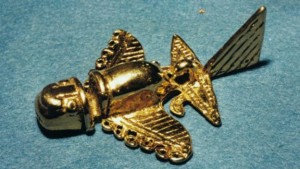
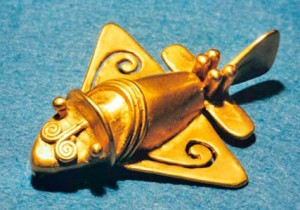
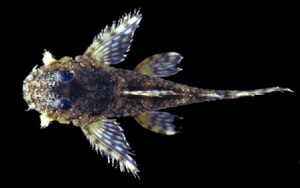
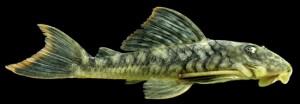

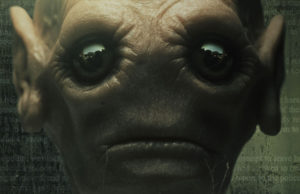






You must be logged in to post a comment Login